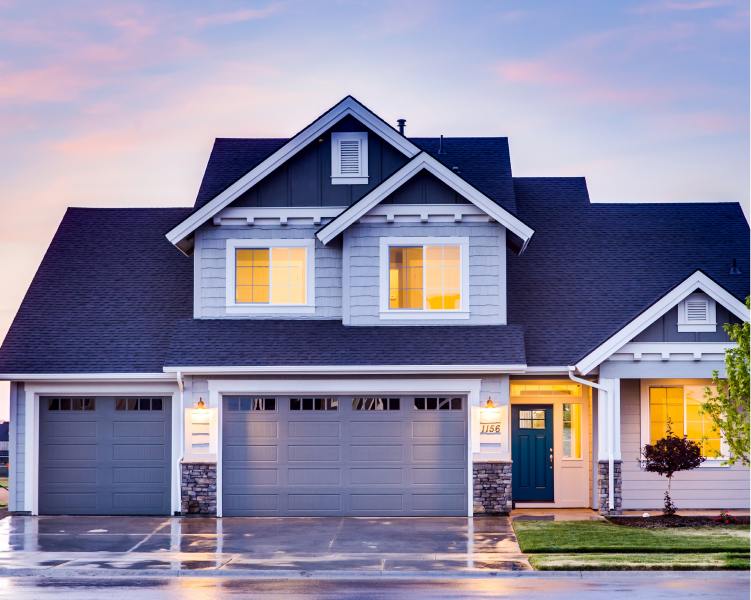Picture this: You come home after a long day at work, and with just a tap on your smartphone, you adjust the thermostat to your preferred temperature and dim the lights to create a cozy atmosphere. Is it impossible? Not anymore! In today's interconnected world, managing your smart home technology has become way easier. And all thanks to the intuitive interfaces, aka web applications, that allow you to control and monitor various smart devices remotely.
The cherry on the cake - a web application for a smart home also brings convenience and control to your fingertips, taking your home automation game to the next level. Want to know more about what is a web application, its examples, and more? Let's delve further!
- What is a Web Application?
- Web Application Integration for Smart Home
- Uses of Web Applications in Creating Smart Home Automation
What is a Web Application?
The typical answer to what is a web application is that it's software accessed through a web browser that allows users to perform various tasks or interact with information on the internet.
Now, let's focus on what is a web application for smart homes. Regarding smart homes, a web application for smart homes is a platform accessible through web browsers, enabling you to remotely manage your smart home devices. Users can adjust thermostat settings, control lighting, monitor security cameras, and manage other connected smart devices through the web application.
Web Application Examples?
Now that you are aware of what is a web application, it's time to discuss some best web application ideas for your smart home:
1. EVVR Console
The first web application integration example we have is the EVVR web console. The EVVR Web Console, a web-based application, serves as a robust tool for streamlining home automation tasks. It seamlessly integrates with all smart home EVVR products, as well as devices compatible with Zigbee 3.0 and Sub-1 GHz protocols.
Through its intuitive interface, you create different scenes responding to specific triggers. These allow personalized and seamless interactions between devices. Whether it's adjusting lighting based on the time of day or triggering actions when specific events occur, the EVVR Web Console offers an array of possibilities to make your home smarter and more efficient.

2. Alexa Web App
Now we have the Alexa Web App - a web application giving you full charge over your Amazon Alexa compatible devices from a web browser, like Google, Mozilla, and more. With this web application, you conveniently interact with Alexa, so you manage smart home devices, set up routines, play music, and ask questions. The best part about having the Alexa Web App is that you get the luxury of an Amazon voice assistant, controlling all gadgets through voice commands.
3. Hue App
A Hue Web App is a web-based application developed by Philips for controlling and managing Philips Hue smart lighting products. Through the Hue Web App, you can adjust lighting color, and brightness, create scenes, set schedules, and manage groups of lights. This type of application offers an alternative way to control Philips Hue lights without solely relying on a mobile app or voice commands. Resultantly, you enjoy greater flexibility and accessibility in managing your smart lighting setups.
4. Ecobee Web Portal
Lastly, we have the Ecobee Web Portal - a web application provided by Ecobee - a company specializing in smart thermostats. Using the Ecobee Web Portal, you can adjust temperature settings, create schedules, and manage multiple thermostats in different locations. The only downside of the Ecobee Web Portal is that you don't have access to the HomeIQ report (available on smartphones). However, you still get information about your heating and cooling systems and their energy usage.
Web Application Integration for Smart Home
After discussing what is a web application and relevant examples, it's time to dive into the details of web application integration in your smart home.
Integrating a web application into your smart home involves connecting web services and devices to create a seamless and interconnected ecosystem. Here's a detailed step-by-step guide on how to integrate a web application for your smart home:
Select a Smart Home Hub
Selecting the right smart home hub or platform is crucial for integrating web applications into your smart home. Research various options for compatibility with your existing devices, supported protocols, and integration capabilities with web applications. Evaluate features like automation creation, remote access, voice assistant compatibility, and user-friendliness.
Also, check for supported web applications and consider the community and developer support for customizations. Opt for a platform that aligns with your long-term goals, offers scalability, and fits your budget. Here are some popular smart home hubs that come with excellent web applications:
1. EVVR Center Lite
First, we have the EVVR Center Lite - an exceptional smart home hub having an efficient web application. The EVVR Web Console interface helps you craft drivers for Zigbee 3.0 and Z-Wave Plus devices effortlessly through its smooth interface. You can use this web application over your web browser and activate your home automation system with simplicity. Troubleshooting becomes a breeze on a sizable screen or the dedicated app, granting you unbounded convenience across any space.

With a robust peer-to-peer network connection and advanced data encryption, accessing electronic devices remotely remains steadfastly secure. In the face of power outages, rest easy knowing that all your data resides locally, complemented by reliable backup battery support for uninterrupted control. It's also compatible with voice assistants like Alexa and Siri. Here are some key features of this smart home hub:
- Seamlessly integrate Zigbee 3.0 and Sub-1 GHz devices through EVVR Console.
- Troubleshoot with ease using a user-friendly interface on a spacious screen or app.
- Local network connectivity for device communication without internet dependency.
- Real-time and local data processing ensures uncompromised privacy.
2. Homey Pro Hub
Get ready to elevate your innovative home experience with the Homey Smart Hub - a versatile solution that seamlessly manages your devices. This hub offers you the Homey Web App, an expansive interface that simplifies the management of your devices and interactions. You can effortlessly oversee your home's operation from anywhere in the world, granting you control over devices, real-time energy usage insights, and timely sensor alerts.
The Homey ecosystem offers compatibility with various renowned brands, from Sonos and Philips Hue to Nest and more. Homey differs from other hubs as it's built on privacy-by-design principles, and your data remains confidential. Here are some of its key features:
- Seamlessly manage devices via an expansive Homey Web App interface.
- Receive real-time energy usage insights and timely sensor alerts.
- Create personalized Flows within the Homey app for tailored automation.
- Integrate voice control through Homey Bridge with Amazon Alexa.
Account Setup and Authentication
After knowing what is a web application now, let's move further to account setup and authentication. Start by making a new account or logging in to an existing account associated with the smart home hub. This authentication process ensures that only authorized users access and control devices and services through the web application.
Access the Dashboard or Web Interface
Once logged in, you are presented with a dashboard or user interface within the web application. This interface displays an overview of your connected smart devices, their status, and what actions you can take.
Device Discovery
The web application allows you to initiate a device discovery process. The hub scans for compatible smart devices and web services that are needed to be integrated into the smart home ecosystem. Next, select the specific web services or applications you want to integrate with your smart home hub.
Automation and Customization
The web application provides tools to create custom automation, routines, or scenes involving smart devices and integrated web services. To enjoy personalized settings, you can define triggers (such as time of day, sensor readings, or external events) and actions (device commands, notifications, or interactions with web services).
That's all! Now you've successfully integrated a web application for a smart home!
Uses of Web Applications in Creating Smart Home Automation
A web application plays a pivotal role in creating and managing intelligent home automation, offering a range of versatile uses that enhance convenience, control, and customization. Through a web application, you can:
- Centralized Control: Access and manage your entire smart home ecosystem from a single, user-friendly web interface, eradicating the need to switch between multiple apps.
- Device Configuration: Effortlessly configure and fine-tune settings for various smart devices, such as thermostats, lights, and cameras, using the convenience of a larger screen.
- Customization: Tailor your smart home experience by defining personalized rules and actions that align with your lifestyle, preferences, and routines.
- Security and Surveillance: Keep a watchful eye on your home's security through the web application, enabling you to view live camera feeds. Along with that, you receive alerts and remotely manage security settings.
Conclusion
As you navigate the realm of smart homes, having a clear understanding of what is a web application helps you make a personalized living environment. It's an application that you can easily access via any web browser. Some common examples of web applications include the EVVR Web Console with the EVVR Center Lite - an exceptional smart home hub. It's compatible with voice assistants like Siri and smart home protocols like ZigBee.
So, you can easily manage a wide array of devices through a comprehensive web interface. EVVR also brings you some amazing, intelligent home devices like the EVVR Energy Monitoring Smart Plug and Relay, EVVR Pad S, EVVR In-Wall Relay Switch, and more. Reach out to us and get the best innovative home products now!











